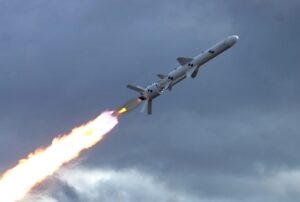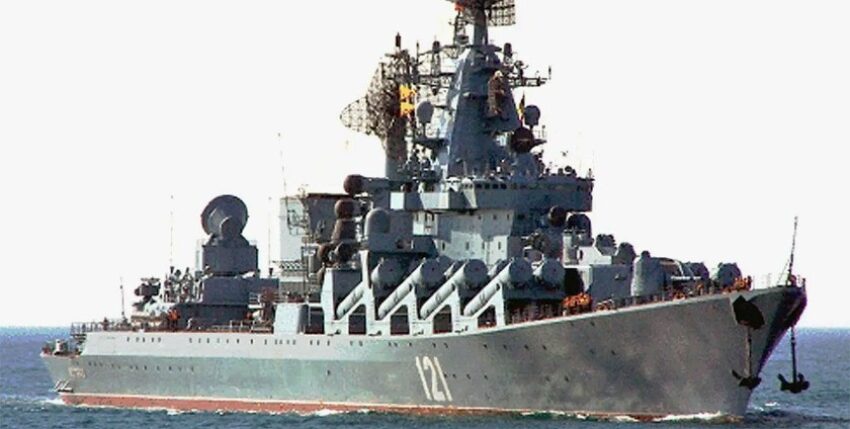Last message Thursday, 14.04.2022, 23:00 h
According to several media reports, the Russian Ministry of Defence has confirmed that the Russian cruiser "Moskva", the flagship of the Russian Black Sea Fleet, sank last night, presumably damaged by at least one Ukrainian "Neptune" missile. While the burning ship was being towed from its last position about 25 miles east of Snake Island to Sevastopol, it lost its "stability" in heavy seas and sank.
Thursday, 14.04.2022, 10:00 a.m.
Just a week ago, NavalNews published a report on the "Moskva" by "Covert Shores" editor H.I. Sutton, in which the ship was portrayed very well in a striking way
see link! www.navalnews.com
Now we are receiving news of serious damage to the "Moskva" by Ukrainian-developed "Neptun" RK-360 sea-target missiles - according to one side. The Russian side speaks of a limited fire on board - as can happen from time to time - you're not in the cargo! As always in these times, there is some truth in the news, but the real picture only becomes recognisable after a certain amount of time.

The Slava-class weapon carrier
Apart from the initial occupation of Snake Island at the south-western end of Ukrainian territorial waters at the very beginning of the Russian invasion, the "Moskva" did not come to the fore to any great extent. The missile cruisers of the "Slava" class are not equipped for land target fire, but were designed towards the end of the 1970s to combat Western aircraft carriers and their defence groups. Hence the maximum effort with heavyweight SS-N-12B / Sandbox (P-1000 Vulkan, after conversion) sea target FKs in 16 forward-facing launch containers with a range of 450 km (240 nautical miles) at 2.5 times the speed of sound. The FK itself is 12 metres long and weighs around 5 tonnes. The warheads carry an effective charge of approximately 500 kg, which could be equipped with a 350 kiloton nuclear warhead at any time, even if the Black Sea were to be denuclearised. In this sense, the area of deployment was primarily the Mediterranean in addition to the Black Sea.
The battleship
With a length of almost 190 metres and a displacement of almost 12,000 tonnes, such a large battleship is a high-value target in itself and will not venture too far below the enemy coast - with the exception of the pictures of the conquest of the Ukrainian islet, where the ship was probably clearly visible at close range for the purpose of a "show of force". Shore target fire from the forward 130-mm twin turret up to a distance of 22 kilometres (12 nautical miles) is certainly possible (especially with a relatively heavy warhead of 33 kg), but the Grigorovich-class frigates with their modern 100-mm turret on the forecastle also reach this distance - more accurately, but only with half the effective charge.
Tasks in the Black Sea
Nevertheless, a platform of this size in the middle of the Black Sea acts like a spider at the centre of its web - as a lead ship and blockade agent against any surface disruption that might occur there. And with 64 SA-N-6 / Grumble missiles (S-300F / Fort / 8 x 8-fold launcher between the superstructures), it provides an air defence screen capable of reacting over a radius of 100 kilometres between Odessa and Sevastopol. Despite this, the flagship of the Black Sea Fleet kept returning to Sevastopol after a few days - possibly because the Russian leadership, initially confident of victory, only planned short-term deployments, possibly to resupply in the harbour.
What does a possible failure of the "Moskva" mean?
If the news is confirmed and the severity of the damage prevents the flagship of the Black Sea Fleet from manoeuvring freely, this would be a major psychological blow to the Russian naval forces. However, the loss of the "Moskva" would have no influence on the intensity of Russian land target fire with cruise missiles from the sea, which only depends on resupply via Sevastopol or Novorossiysk. It would also not completely thwart amphibious operations, as there are still sufficient units in the Black Sea - despite damage and losses in Berdyansk.
And where are the sister ships?
There is still the question of the two sister ships "Varyag" (Pacific Fleet) and "Marshall Ustinov" (Northern Fleet), which were still in the Mediterranean at the beginning of the war. Since mid-February their trace has been lost on the net - perhaps the comments can help.








